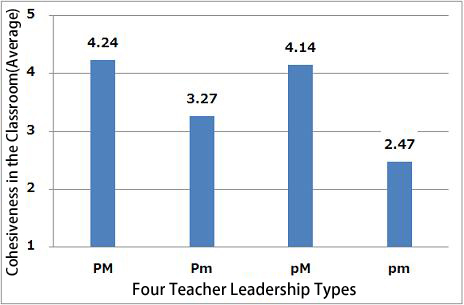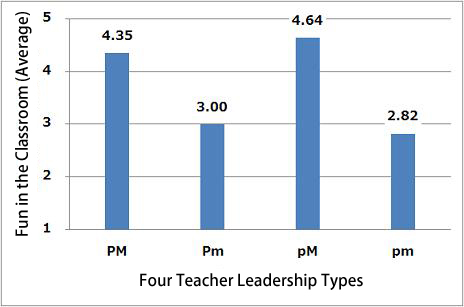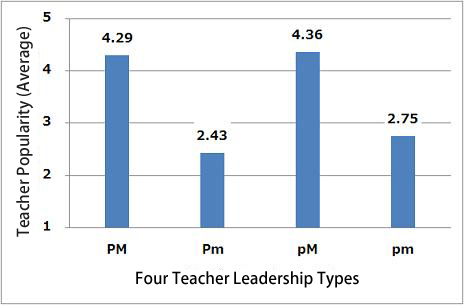Anatomy of Child Bullying in Japan
- 1. Definition of Bullying and Its Transformation
- 2. Bullying in Different Cultures - Differences and Similarities in Bullying Between Countries
- 3. Bullying and the Relation to Teacher Leadership (This article)
- 4. Bullying Prevention (1): Preventing Bullying Caused by "Negative Conformity"
- 5. Bullying Prevention (2): Preventing the Escalation of Bullying by Recognizing Children's SOS Signs
- 6. Bullying Prevention (3): How to Interpret the Anti-Bullying Act
- 7. Bullying Prevention (4): What Should We Expect from Bullying Prevention Programs?
- 8. Bullying Prevention (5): Bullying Prevention Program by the Tokyo Metropolitan Government
- 9. What Does the Number of Bullying Reports Imply? An Analytical Study Based on Data from across Japan
- 10. Anatomy of Child Bullying in Japan 10: Effects of the broader definition of bullying
Today, bullying is not just a problem between children who bully and those who are bullied. Here, I take a perspective that considers it to be a problem that occurs within a group and explain the relation between bullying and the teacher's leadership in the class group. Observations of the teacher-class relationship are also seen to apply to relationships between the parent-child at home and in workplace relationships.
In a class, the teacher is the acknowledged leader. How does teacher leadership affect the atmosphere of a class and promote or prevent the occurrence of bullying?
Ordinarily, bullying is considered to take place out of the sight of the teacher and other adults, and because the teacher is not directly involved, what the teacher says and does may not be thought of as having much effect on bullying. Nevertheless, there is ample data indicating that teacher leadership has a significant effect on the occurrence of bullying.
Chart 1 employs the PM Functions that are used to discuss and measure leadership. Teacher leadership can be divided into the P Function (Performance Function) and M Function (Maintenance Function). P Function refers to activities that structure the class as a group, including making and observing rules. M Function refers to activities that maintain human relations within the class group, including becoming close to students and watching over and recognizing them, etc.
Think back to your homeroom teacher when you were in the sixth grade. What would be their total PM scores? If you can't remember, try to remember a different grade. The lowest total PM score is 10 for each and the highest is 50. Using the Excel sheet, you can input and tally the score yourself.
Chart 1. Teacher PM Leadership
What was your homeroom teacher like when you were in the sixth grade? Mark the answer that best applies to each of the 20 P and M Functions below, from 1 (Not at all) to 5 (Very much) and total the score.
| Not at all | Not much | Half of the time | Fairly well | Very much | ||
|---|---|---|---|---|---|---|
| P Functions | ||||||
| 1. | Admonished us for forgetting to bring books and school supplies | 1 | 2 | 3 | 4 | 5 |
| 2. | Reminded us to bring books and supplies | 1 | 2 | 3 | 4 | 5 |
| 3. | Reminded us to study at home (do homework) | 1 | 2 | 3 | 4 | 5 |
| 4. | Reminded us to wear name tag, carry a handkerchief and other daily items | 1 | 2 | 3 | 4 | 5 |
| 5. | Reminded us to keep desk and bags neat, where to place hats, etc. | 1 | 2 | 3 | 4 | 5 |
| 6. | Reminded us to use things carefully and with respect | 1 | 2 | 3 | 4 | 5 |
| 7. | Encouraged us to be friendly with all students in the class | 1 | 2 | 3 | 4 | 5 |
| 8. | Encouraged clear expression of opinion | 1 | 2 | 3 | 4 | 5 |
| 9. | Reminded us to observe rules and regulations | 1 | 2 | 3 | 4 | 5 |
| 10. | Encouraged questions when something was not understood and inquiry on one's own | 1 | 2 | 3 | 4 | 5 |
| P = Total minimum score of 30 or more is considered P. p = Total score of less than 30. |
P Function Total ( ) points | |||||
| M Functions | ||||||
| 1. | Understood children's feelings | 1 | 2 | 3 | 4 | 5 |
| 2. | Considered things from children's perspective | 1 | 2 | 3 | 4 | 5 |
| 3. | Impartial and treated all children the same | 1 | 2 | 3 | 4 | 5 |
| 4. | Listened to what children were saying | 1 | 2 | 3 | 4 | 5 |
| 5. | Teaching helped students learn how to study | 1 | 2 | 3 | 4 | 5 |
| 6. | When students did the wrong thing, asked the reason before scoldingく | 1 | 2 | 3 | 4 | 5 |
| 7. | Gave advice when students were troubled | 1 | 2 | 3 | 4 | 5 |
| 8. | Explanations helped students understand | 1 | 2 | 3 | 4 | 5 |
| 9. | Played with students | 1 | 2 | 3 | 4 | 5 |
| 10. | During class, stopped at each desk to teach and help individual students | 1 | 2 | 3 | 4 | 5 |
| M = Total minimum score of 30 or more m = Total score of less than 30 |
M Function Total ( ) points | |||||
The total minimum score of 30 or more is represented as an upper-case or large P or M and a score of less that 30 as a lower-case or small p or m, with upper- and lower-case letters indicating relative strength of the P or M Functions. These functions are thus paired as follows: PM (both functions are strong), Pm (strong P, weak m), pM (weak p, strong M) or pm (both weak). What do these functions tell us about the teacher and the class?
The same questions were presented to university students. What were the results? Do you find anything in common with your classes? We categorized the PM style given by university students to their sixth-grade homeroom teacher into four types and for each type, had them score the teacher from 1 (not at all) to 5 (very much) in response to questions as "How cohesive was the class?" "Was the class fun?" and "How did you like the teacher?" (Fig. 1 to Fig. 3). Students were also asked to describe the class and responded with their own comments (Chart 2).

Fig. 1. Cohesiveness in the Classroom by Teacher Leadership Type

Fig. 2. Fun in the Classroom by Teacher Leadership Type

Fig. 3. Teacher Popularity by Teacher Leadership Type
Chart 2. 6th Grade Class by Teacher Leadership Type
| Classes of PM teachers (strong P and M) |
|---|
|
| Classes of Pm teachers (strong P, weak m) |
|
| Classes of pM teachers (weak p, strong M) |
|
| Classes of pm teachers (weak p and weak m) |
|
What do these figures and charts tell us?
The classes of PM teachers (both high P and M) were well liked by students, united as a group, showed good results in their activities, and were considered fun. Even when bullying occurred, it was resolved through the teacher's efforts, and students with developmental disabilities also felt comfortable and secure.
As for the classes of teachers with only one high function (either Pm or pM), classes of Pm teachers had a tense atmosphere and the students did not like the teacher or feel comfortable and secure in the class. In contrast, classes of pM teachers had a warm atmosphere; students liked the teacher, and the classes were totally different in character from the former. What could be the reason?
Teachers with a high P function only tend to control the students so that the class fits their view of what a good class is (children are well-behaved and highly motivated to study, etc.). The teacher rigidly applies his or her own theory and views of how students should be, and as a result, the students do not understand why the teacher is angry and feel that the teacher does not understand them, etc. Also, when the teacher treats students in a negative manner for behavior that does not coincide with his or her principles, the teacher implicitly sends a message to the children that bullying is justified when there is a reason. This results in bullying of the child or stress that leads to the act of bullying. Research on bullying also indicates that in classes of teachers who have excessively strong ideas on how classes should be held (strong irrational beliefs), bullying is more likely to occur and more students tend to think that teacher does not understand them or do not like the teacher. However, if students are clearly instructed that bullying is unacceptable, this acts as a definite restraint, and for this reason, even if bullying occurs, it is not likely to become widespread.
On the other hand, because teachers with only a high M function (pM) acknowledge the students, and try to understand their feelings, this also encourages the students to acknowledge each other.
The last case is that of teachers with both low p and m functions (pm). The classes of pm teachers are characterized by rampant bullying and disorder(classroom collapse). Why are effective rules difficult and bullying and classroom collapse often problems for pm teachers? Because the pm teacher finds it difficult to make rules and understand children's feelings well, the class tends to become less cohesive, and if no action is taken, mutual recognition declines and rules are also ignored. Students are also less fond of the teacher; they do only what they like and refuse to do what they don't like. They only talk to their friends and pay no attention if another student is isolated and friendless. Classroom collapse ensues, bullying is rampant, and students who feel alienated and out of place feel even more helpless and vulnerable.
As seen above, bullying and other problems of abusive behavior are less likely to occur in a class that is a well-organized group with rules that enable it to function well for the mutual recognition and support of its members. This also applies, to a greater or lesser extent, to the family, workplace, and any sort of group.
Related article



 Dr. Sugimori is Professor of Social Psychology at Tokyo Gakugei University, conducting research on group psychology (evaluation of team working, psychology in the citizen judge system, and effects of experiential activities) as well as risk psychology, from the standpoint of cultural social psychology focusing on social relations between individuals and groups. He also serves as Board Member of the Japanese Society for Law and Psychology; Executive Board Member of the Society for Field-Culture Education; Board Member of the Youth Friendship Association; Councilor of the Outward Bound Japan; Researcher of the Center for Research on Educational Testing; Board Member of the Children Institute for the Future, Tokyo Gakugei University; Chairman of the Accreditation Committee, Japan Association for Certifying and Training Educational Specialists.
Dr. Sugimori is Professor of Social Psychology at Tokyo Gakugei University, conducting research on group psychology (evaluation of team working, psychology in the citizen judge system, and effects of experiential activities) as well as risk psychology, from the standpoint of cultural social psychology focusing on social relations between individuals and groups. He also serves as Board Member of the Japanese Society for Law and Psychology; Executive Board Member of the Society for Field-Culture Education; Board Member of the Youth Friendship Association; Councilor of the Outward Bound Japan; Researcher of the Center for Research on Educational Testing; Board Member of the Children Institute for the Future, Tokyo Gakugei University; Chairman of the Accreditation Committee, Japan Association for Certifying and Training Educational Specialists.










